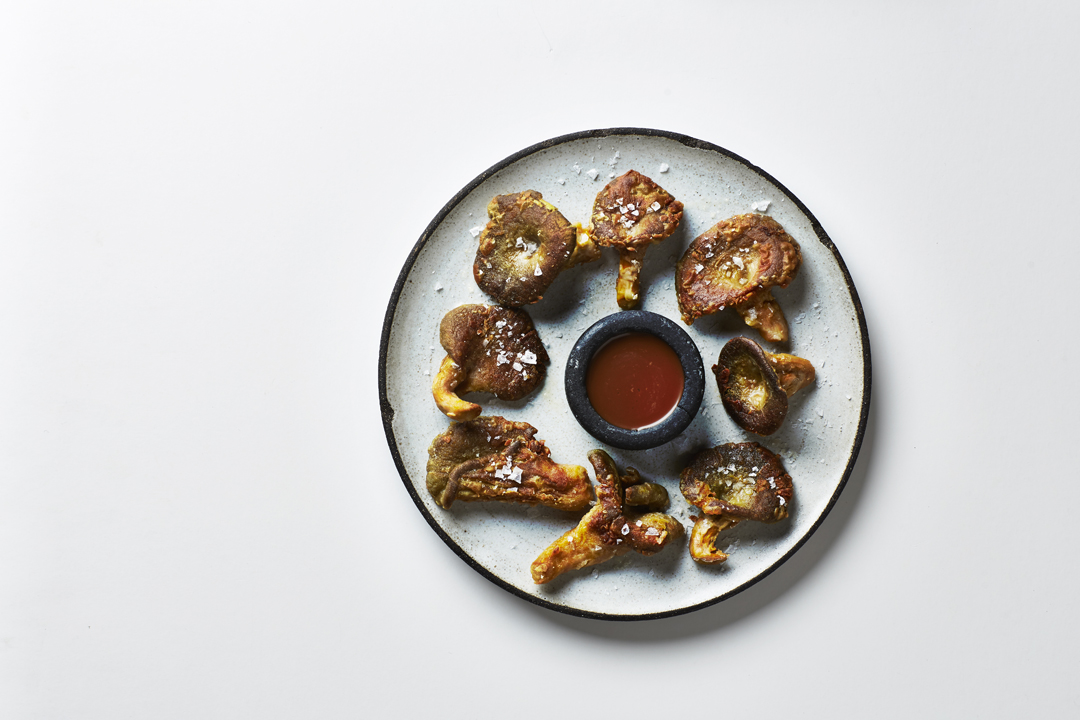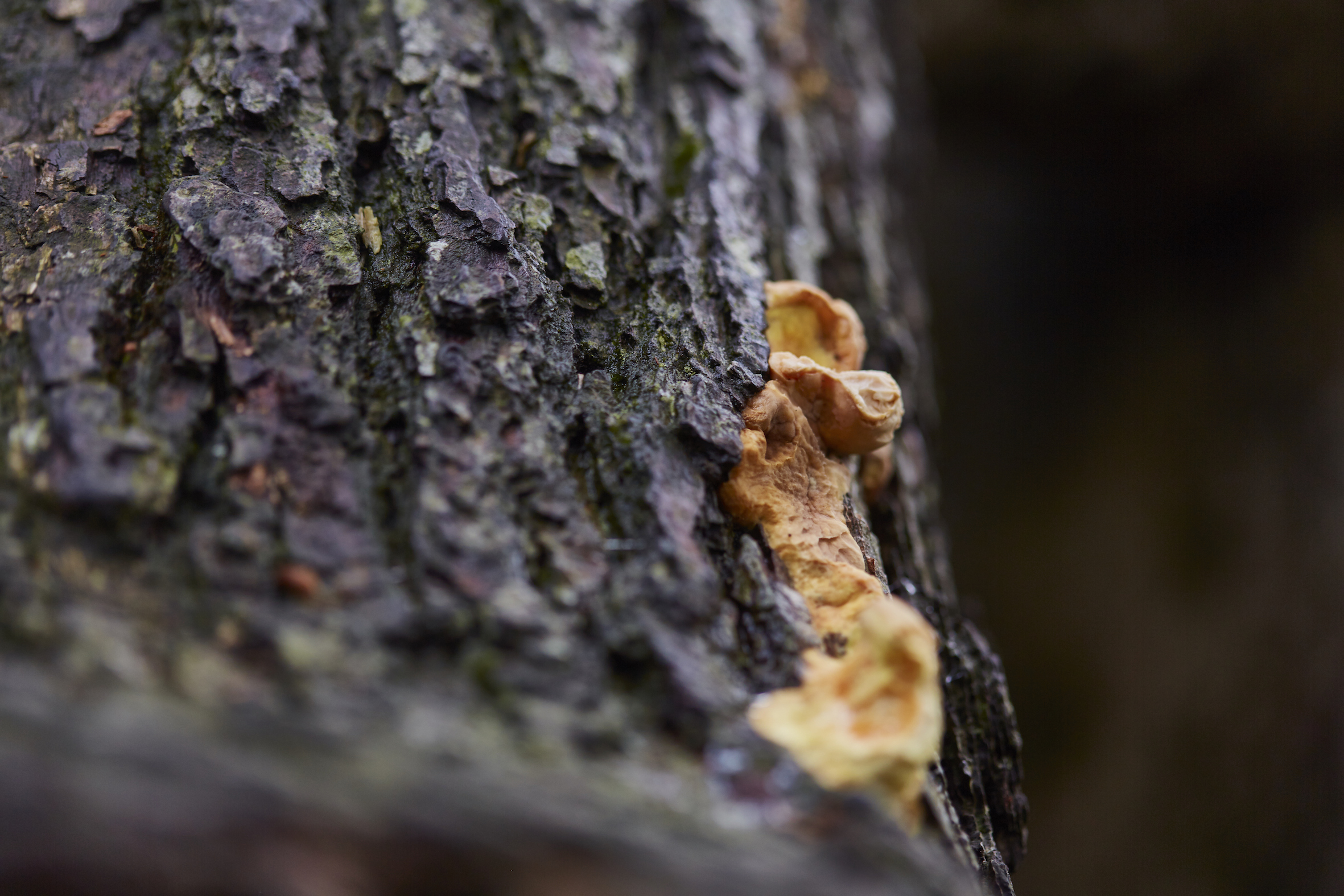
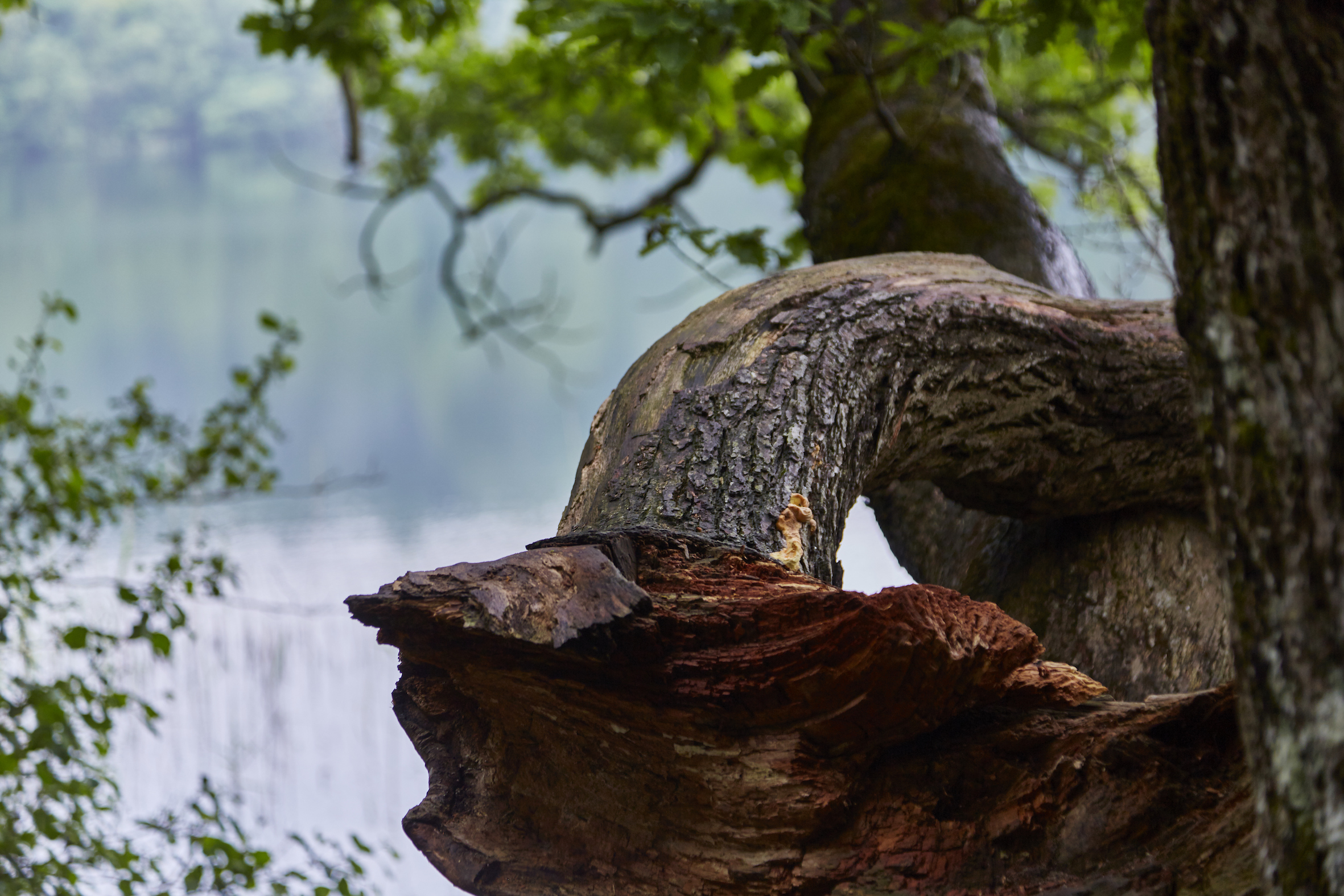
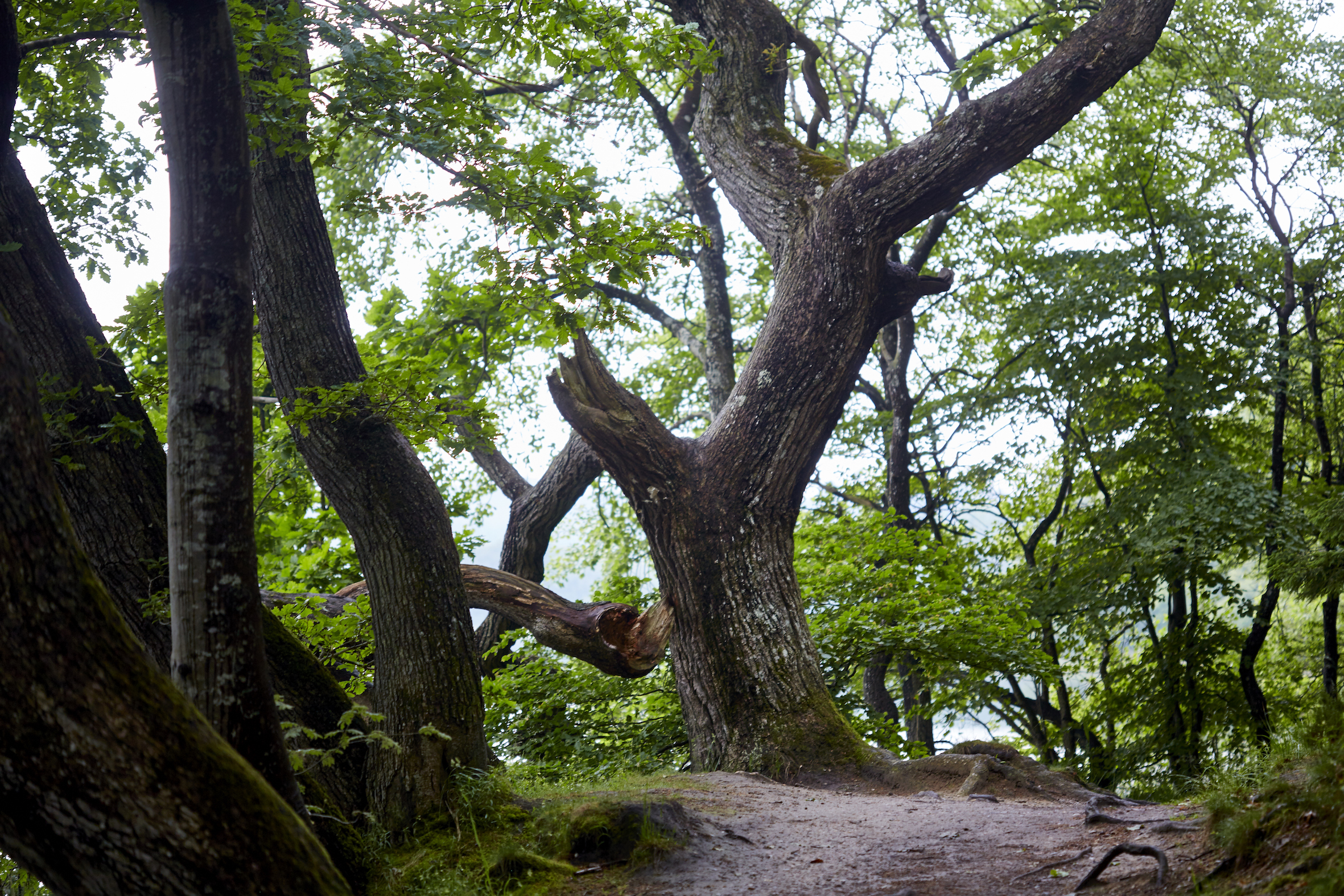
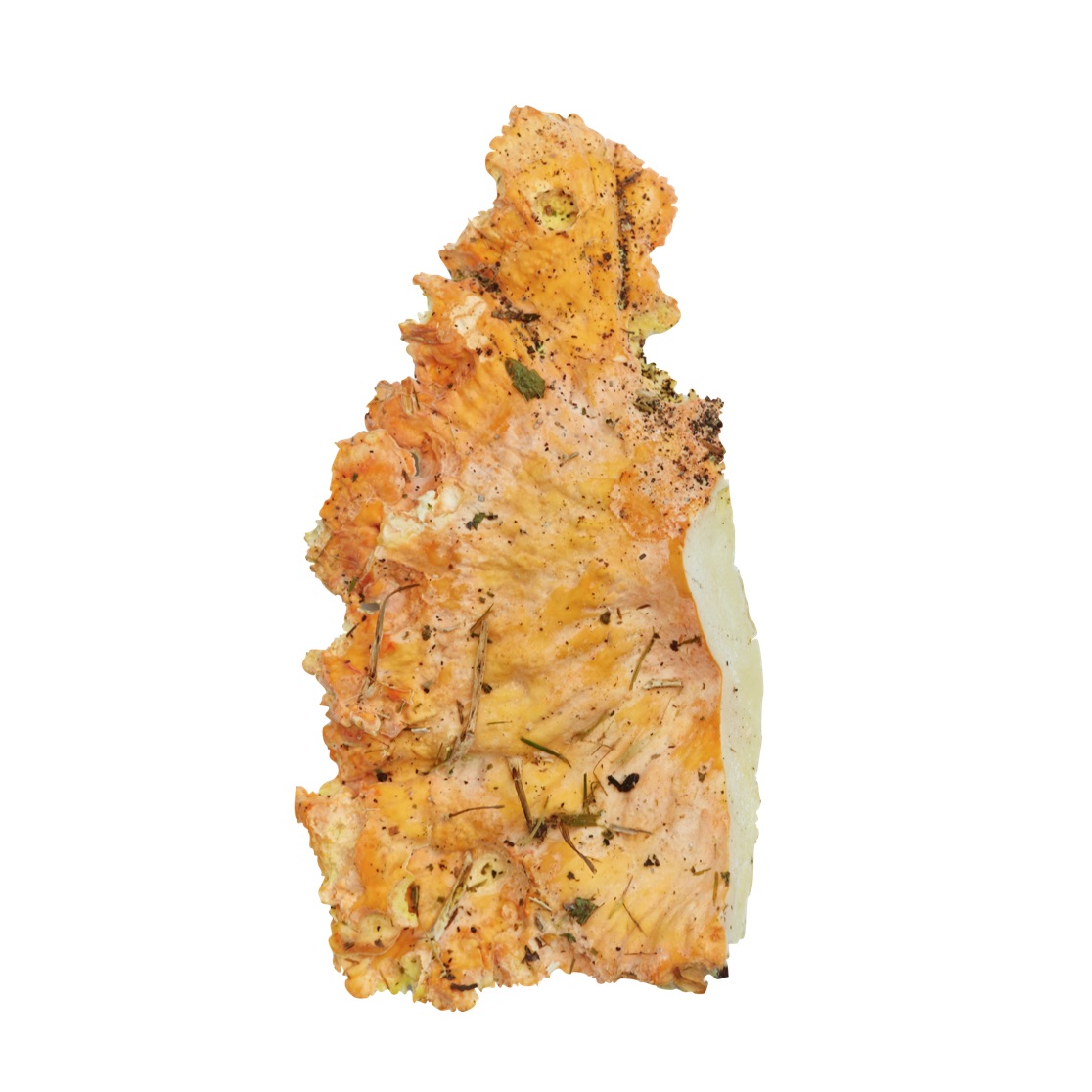
Chicken of the woods
This mushroom didn't get its name for no reason. When cooked, young chicken of the woods has a texture that's similar to chicken meat.
-
Where to Find It
Chicken of the woods is a parasite that attacks the heartwood of trees and ultimately turns them to dust. It prefers dead or dying trees, and you'll find it on large, mature oak trees and other hardwoods like willows and poplars, where it grows directly on the trunk. It also often attacks fruit and ornamental trees.
Deciduous forests, towns.
-
When to Find It
Chicken of the woods often fruits in the middle of summer, but it has quite a long shoulder season, and can easily pop up at unexpected times if the weather behaves to its liking. The number of hen of the woods mushrooms skyrockets after heavy rain.
Entire mushroom: May, June, July, August, September, October.
-
How to Spot It
Chicken of the woods has the largest fruiting bodies of any mushroom in Denmark—they can grow to be as tall as one meter! Composed of multiple yellow, tongue-shaped caps that grow on top of each other, hen of the woods can form a belt around a tree. Each cap can grow to a diameter of 30 to 40 cm. When young, the caps are distinctly yellow, but with age they become paler. Their undersides are lighter than their surface and have visible pores.
-
How to Pick It
You can use the whole specimen when the mushrooms are young, but as they grow, only the cap is interesting to the forager. Cut the usable parts off the stem with a knife.
Risk of misidentifying the plant
Chicken of the woods can be confused with the giant polypore, which has a similar growth pattern but is distinctly fibrillose with scales on the surface of its caps. The giant polypore isn't tasty like hen of the woods, but it is edible.


